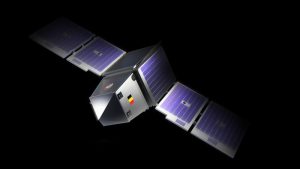Phantom will be developed at Redwire’s facility in Belgium – in Kruibeke, near Antwerp – and it will support a range of intelligence, Earth science, and communications missions.
The European involvement is through the European Space Agency’s VLEO Skimsat mission, on which Redwire is working together with Thales Alenia Space in the UK.
The main goals of the mission, says Redwire, are boosting satellite sustainability and mission performance while reducing spacecraft mass and mission cost by enabling sustained operational capability at lower altitudes.
Note that the company recently announced the American counterpart, the VLEO spacecraft platform SabreSat.
Redwire highlights the strategic significance of VLEO for Earth science, intelligence, communications, and defense and security applications. While low Earth (LEO) and geosynchronous (GEO) orbits are becoming increasingly congested and contested, spacecraft in VLEO operate in a relatively unimpaired environment, it says.
“As a worldwide leader in developing and providing VLEO capabilities, Redwire is thrilled to continue its trailblazing work in VLEO with the new European-built Phantom platform,” said Pete Cannito, Redwire Chairman and CEO. “We believe that VLEO will be a critical domain for the future of defense and intelligence operations, and we are proud to be leading the way in bringing this untapped orbit from concept to reality.”
VLEO spacecraft are designed to bridge the gap between air and space – from 90 to 350 kilometers. Flying above airborne anti-access areas while operating closer to the Area of Responsibility on the ground than existing satellites, highlighted the company. Additionally, unlike LEO and GEO, debris in VLEO deorbits in hours or days rather than in decades or more.
Also, if collisions occur or antisatellite weapons strike targets in traditional low-Earth orbits, VLEO satellites would not be affected, says Redwire.
See also: QinetiQ sells small satellites specialist Space NV to Redwire
 Electronics Weekly Electronics Design & Components Tech News
Electronics Weekly Electronics Design & Components Tech News




